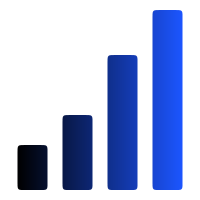What Statistics Are Used In Data Analysis? - Issue 126
Introduction and must-know statistical concepts for data analysis and data science
I’d like to start a new year by reminding you about the foundational concepts of any analytical role that requires data interpretation. Wearing the hat of an analyst takes more than knowing how to wrangle data. It takes the essential knowledge of statistics, business, and requires critical thinking. In other words - many hats.
Analysts don’t work with advanced statistics (unlike data scientists) and are unlikely to deal with complex distributions like exponential, Weibull, or Beta:
And that’s the biggest downside of most statistical classes and tutorials out there. Without the context and foundation, your search for the right solution will take ages and will pull you far off of your original path.
Applying core statistics to real-world problems mostly comes down to understanding casual inference, distributions, significance, correlations, and experimentations. In this issue, I will summarize and cover must-know statistical concepts and their use cases that data analysis couldn’t happen without.
Statistics 101
The whole purpose of statistics (statistical theory, methods, and analysis) is to provide certainty out of uncertainty. In other words, when you don’t have a high degree of trust (in either quantity or quality of data), how can you make sure you can make the right decision?
There are descriptive statistics and inferential statistics. Both are very different approaches to solving and describing the same problems.
We apply descriptive statistics for big data analytics working with sums, medians, skewed data, variance, and deviations. It’s called “descriptive” because it’s meant to describe the data. It’s used to understand data trends. Every time you have to plot a distribution, you are working with descriptive stats.
Inferential statistics are used to make predictions or infer data trends and patterns. In a nutshell, it allows you to take a sample of data and apply it to a larger population or run hypothesis testing. Every time you work with A/B tests, modeling, or any type of hypothesis or forecast, you are dealing with inferential stats.
Must-know statistical concepts for data analysis
Here are statistical concepts from both descriptive and inferential that you need to know and be able to use comfortably to be proficient at analytics:
Estimations and significance




